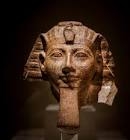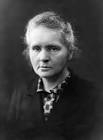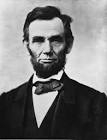Hatshepsut – Queen Of Egypt, Pharaoh, Legacy, Achievements
Hatshepsut, the name that resonates through the annals of ancient Egyptian history, was a woman of remarkable achievement and influence. Born in the 15th century BC, Hatshepsut defied the conventions of her time to become one of the most successful pharaohs of the New Kingdom period. Her reign, characterized by unprecedented prosperity and artistic flourishing, left a lasting legacy on Egypt and beyond.

Personal Information
| Full Name | Hatshepsut |
|---|---|
| Nick Name / Stage Name | Queen Hatshepsut |
| Born | 1507 BC, Ancient Egypt, Thebes |
| Died | 1458 BC, Ancient Egypt, Thebes |
| Age | 49 |
| Gender | Female |
| Zodiac Sign | Not Applicable |
| Hometown | Thebes |
| Nationality | Egyptian |
| Ethnicity/Descent | Egyptian |
| Years Active | Reigned for 22 years |
| Marital Status | Married |
| Husband | Thutmose II |
| Children | Neferure (Daughter) |
| Political Affiliation | Pharaoh of Egypt |
| Alma Mater | Not Applicable |
| Profession | Pharaoh |
| Net Worth (approx.) | Not Applicable |
| Debut | Became Queen Regent in 1473 BC |
| School | Not Applicable |
| College | Not Applicable |
| Education Qualification / Degree | Not Applicable |
| Hobbies/Habits/Interests | Religious Ceremonies, Trade Expeditions |
| Favorite Clothing Brands | Not Applicable |
| Favorite Gadgets | Not Applicable |
| Food Habit | Not Applicable |
| Awards | Not Applicable |
| Notable Works | Expansion of Trade, Construction of Monuments |
| Website | Not Applicable |
Early Career
Hatshepsut’s early career began in the royal court of Egypt, where she served as the principal wife of her half-brother, Thutmose II. Upon his death, the throne passed to his son, Thutmose III, who was an infant at the time. Hatshepsut assumed the role of regent, governing Egypt on her stepson’s behalf. This marked the beginning of her unprecedented rise to power.
Education
As was typical of royal upbringing in ancient Egypt, Hatshepsut would have received an education befitting her royal status. She would have been tutored in history, religion, and statecraft, preparing her for the responsibilities of rulership. While the specific details of her education are not recorded, her keen understanding of politics and administration is evident from her later career achievements.
Career
Hatshepsut’s career reached its zenith when she declared herself pharaoh around 1478 BC, effectively assuming the full powers of the monarchy. Her reign was marked by extraordinary achievements, both in the political and cultural realms. As a pharaoh, she undertook ambitious building projects, the most famous of which was the construction of the Mortuary Temple of Hatshepsut, illustrating her deep religious convictions and architectural patronage.
Contributions and Impact
Hatshepsut’s contributions to ancient Egypt were multifaceted and enduring. In the political sphere, she maintained stability and prosperity through shrewd diplomacy and administrative reform. Her trade expeditions to the land of Punt not only enriched Egypt economically but also expanded its cultural horizons.
In the field of architecture, Hatshepsut left a indelible mark with her building projects, particularly her mortuary temple, which is considered one of the architectural wonders of ancient Egypt. Her support for the arts and architecture contributed to a renaissance in Egyptian cultural expression during her reign.
Awards and Honors
As with many ancient rulers, Hatshepsut’s awards and honors are not documented in the modern sense. However, her reign was marked by the widespread adoration of her subjects, and she was held in high esteem throughout Egypt. As a pharaoh, she would have received the highest honors accorded to rulers of that time.
Personal Life
In her personal life, Hatshepsut was known for her close relationship with her daughter, Neferure. The two shared a bond that went beyond the typical mother-daughter relationship, and Neferure played an active role in the royal court during Hatshepsut’s reign. Hatshepsut’s marriage to Thutmose II linked her inseparably to the royal family of Egypt and laid the foundation for her own accession to the throne.
Personal Traits
Hatshepsut was described as a shrewd and charismatic leader. Her ability to navigate the male-dominated world of ancient Egyptian politics is a testament to her strong personality and political acumen. She was deeply interested in religion and is often depicted in religious iconography carrying out ceremonies and offerings to the gods.
Height, Weight, Body Measurements
As is the case with many figures from ancient history, precise details about Hatshepsut’s physical appearance are not available. Statues and reliefs depict her in the idealized style of ancient Egyptian art, showing her as slim-waisted and regal. Her height, weight, and other body measurements remain a topic of speculation among historians.
Scientific or Professional Career
Hatshepsut’s professional career as the pharaoh of Egypt encompassed not only political and military leadership but also a keen interest in science and exploration. Her expedition to the land of Punt is significant not only for its economic implications but also because it involved the earliest known attempt to document foreign flora and fauna.
Legacy
Hatshepsut’s legacy is perhaps best captured in the words of the ancient historian Manetho, who described her as “the noble daughter who assumed the role of king.” As one of the first women to rule Egypt with the full powers of the pharaoh, she remains a symbol of female empowerment and leadership.
Her architectural legacy lives on in the magnificent structures she built, particularly her mortuary temple at Deir el-Bahari. The temple, though damaged over the millennia, continues to inspire awe and fascination as a testament to Hatshepsut’s religious devotion and architectural vision.
Conclusion
In conclusion, Hatshepsut’s journey from a princess of royal blood to the pharaoh of Egypt is nothing short of extraordinary. Her ability to overcome the limitations placed on women in ancient Egyptian society and assert her authority as a ruler has cemented her place in history.
Her contributions to trade, architecture, and culture left an indelible mark on ancient Egypt, and her legacy continues to inspire generations. Hatshepsut’s story is a testament to the timeless nature of leadership and the potential for influence, regardless of one’s gender.





